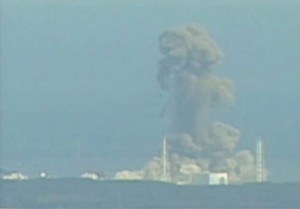
Smoke from nuclear plant. (C) Reuters
The men and women who design, build, and work at nuclear power plants are bright, dedicated people who work hard so that when we flip a switch the power flows, so we can use our computers, watch our tvs, refrigerate our food, microwave our dinners and our popcorn, heat, cool, and vacuum our homes, and jam on our electric pianos and electric guitars when we want to. The drive, dedication and service of the engineers at Fukushima is heroic.
Under normal conditions, nuclear power emits less pollutants than coal, and the waste from nuclear power is regulated. The wastes from coal are not.
Yet, radioactive materials are an intrinsic property of nuclear power; consequently meltdown and disaster are inherent dangers. The disasters at Fukushima Dai-ichi, Fukushima Diaini, and Onagawa, while not predictable, were not unexpected. We’ve seen Chernobyl in ’86, Three Mile Island in ’79. We’ve had fires at Brown’s Ferry. We have had, and continue to have leaks of radioactive material at Oyster Creek, Indian Point, Vermont Yankee, the Hanford Nuclear Reservation and every other nuclear facility in the United States, Japan, France, and I am sure, the rest of the world.
And we learned what? To ‘harden’ the plants? To spare no expense in a fanatical devotion to safety and maintenance?
No. To cut corners and to defer maintenance. To extend to 60 years the life of plants designed to last 40 years.
Continue reading →
